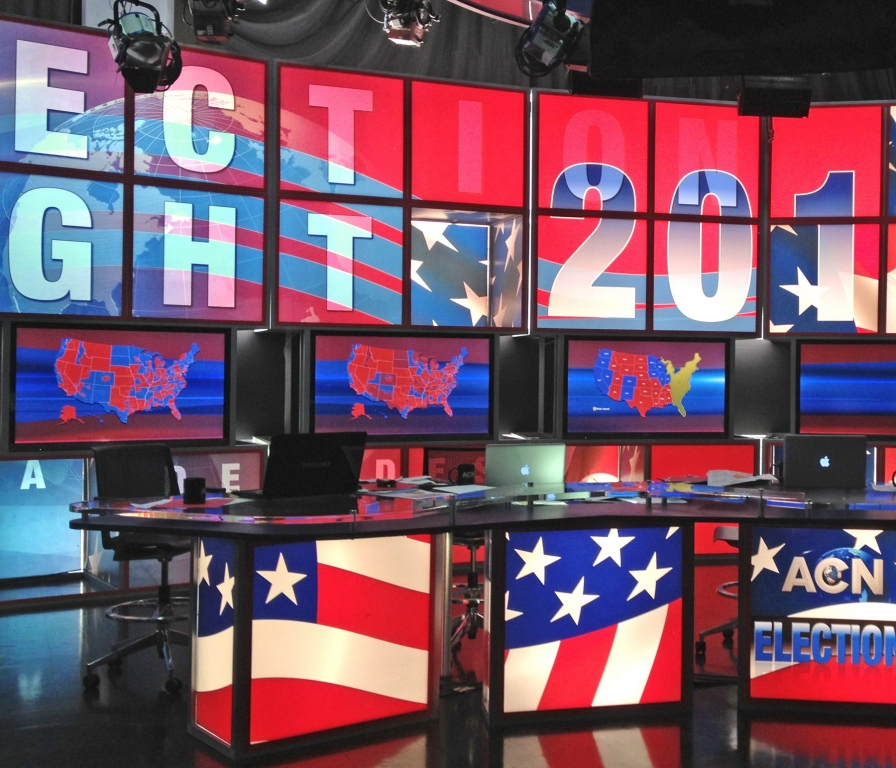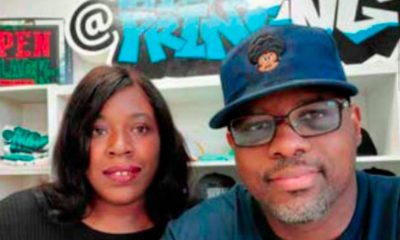Television shows take audiences to some exciting places, and one of the best places to be these days is HBO’s “The Newsroom.” This hot new show starring Jeff Daniels was created by screenwriter, producer and playwright Aaron Sorkin, whose Academy and Emmy award-winning work includes “The Social Network,” “A Few Good Men,” “The West Wing” and “Moneyball.”
Television shows take audiences to some exciting places, and one of the best places to be these days is HBO’s “The Newsroom.” This hot new show starring Jeff Daniels was created by screenwriter, producer and playwright Aaron Sorkin, whose Academy and Emmy award-winning work includes “The Social Network,” “A Few Good Men,” “The West Wing” and “Moneyball.”
The show artfully blends reports of real life news events with the fictional lives of its characters. And while big names dominate the on-screen ensemble, behind the scenes some of Hollywood’s top experts have been hard at work setting the stage for that late breaking news.
Among them is graphic designer Martin T. Charles. With more than 50 feature films to his name, including recent hits such as “Public Enemies,” “Love and Other Drugs,” “Miami Vice,” “Leatherheads” and “Larry Crowne,” Charles has spent his career working with top Hollywood directors, producers, production designers and movie stars, from Ron Howard, Tom Hanks and Michael Mann to Julia Roberts and Johnny Depp. His job? Creating the graphic elements, from props to backdrops and scenery, that together transport the viewer into a world of his making – in this case, an elaborate newsroom where most of the show’s story lines unfold.
“Projects such as this require me to work around the clock, using the industry’s best and most reliable equipment,” said Charles, who operates as 64-inch Roland VersaCAMM VS inkjet printer/cutter, a sophisticated, high-speed printer designed to produce the bigger-than-life images Hollywood requires.
Advertisement
“This printer features specialized, durable inks in a variety of colors, including metallic and white, for the quality imaging and unique visual effects demanded on the set,” he said. “Plus it cuts graphics into virtually any organic shape. It’s quite a machine.”
Charles was brought on board about six weeks before shooting began to support production designer Richard Hoover. As the set’s centerpiece, Hoover envisioned a dramatic two-story wall mural accented by a modern spiral staircase.
“The idea was to create a very large, translucent two-story newsroom set, visually designed so that from every room and every angle, you saw large, imposing graphics – yet were left with a sense of ease,” Charles said. “It was a great concept.”
To reflect this creative vision, Charles used his Roland to print dozens of graphics, covering every glass wall, window and door of the newsroom, many featuring metallic designs. Using etched glass vinyl, he created a dramatic bluish backdrop that became one of the main color palettes for the show. In all, the main two-story wall wrap measured 115 feet long by 18 feet high and required more than 2,000 square feet of printed media. Other graphics included hundreds of decorative elements, from wallpaper to signage and other props.
”It was difficult to produce all the elements needed in the tight time frame provided, but then that’s Hollywood,” said Charles. “In the end, the results were fantastic. The producers were impressed with all the images and the overall effect, and I can thank my Roland for that.”
Advertisement


 Art, Ad, or Alchemy1 month ago
Art, Ad, or Alchemy1 month ago
 Case Studies1 month ago
Case Studies1 month ago
 Andy MacDougall1 month ago
Andy MacDougall1 month ago
 Editor's Note1 week ago
Editor's Note1 week ago
 Columns2 weeks ago
Columns2 weeks ago
 Thomas Trimingham2 months ago
Thomas Trimingham2 months ago
 Marshall Atkinson1 week ago
Marshall Atkinson1 week ago
 News & Trends1 month ago
News & Trends1 month ago















